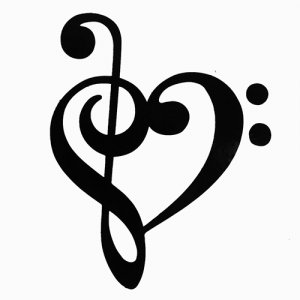Songs of Myself (Part 6)
By Asher Crispe: August 1, 2014: Category Inspirations, Simple Rhythms
 I have often wondered if anyone has counted the number of love songs composed throughout the ages. I would likewise be curious to know how many have been played on the radio or performed in concert. My guess is that they comprise the lion’s share of the music which is pumped out there. Their bankability is no accident. We love love. As the feeling which begins our palette of feelings, love plays a major role in our auto-phonography (are we not written in sound?). Certainly one of the archetypal forms of musical expression has to capture and harness the forces of attraction and adoration.
I have often wondered if anyone has counted the number of love songs composed throughout the ages. I would likewise be curious to know how many have been played on the radio or performed in concert. My guess is that they comprise the lion’s share of the music which is pumped out there. Their bankability is no accident. We love love. As the feeling which begins our palette of feelings, love plays a major role in our auto-phonography (are we not written in sound?). Certainly one of the archetypal forms of musical expression has to capture and harness the forces of attraction and adoration.
In Hebrew, the synonym for music that best fits the lyrical and rhapsodic cascade, the levity and breath of a sunlit sky, the cyclonic turmoil or rapturous vortex of life exposed without armor, is hallel or “praise.” Adoration sings with its lungs filled with the unexpected transcendence of the perceived limits of the natural world. As part of the standard repertory of Jewish liturgy, Hallel (the prayer) is sung on special occasions in celebration of open and revealed Divine miracles. This is why many of the Jewish holidays insert it into services. It marks a rupture in the ordinary–an extra-ordinary disruption that breaks with the flat and smooth surface of time marching on indifferent to our desires and deaf to our plight.
Intoned with regularity on Rosh Chodesh (the new month as established by the new moon), it represents the introduction of a novelty within time itself. Rosh means “head” or more broadly a head-space or state of mind, while chodesh or “month” can be interpreted as an origin of time, that which is chadash or “new.” Idiomatically, the new month may be understood as the consciousness of novelty–the intrusion of an allo-chronic dimension, a temporal othering, a differencing which is sanctified. Music marking the beats and rhythms of love does so as exaltation. Hallel sings out to the Beyond, to the most High.
Ordinarily the thick husk of Nature eclipses and occludes the direct involvement of a supernatural order. No coloring outside the lines! God appears bound by the rules of His own invention, in a Self-restrictive and Self-disciplining way. When governed in this fashion, faced with the harshness of the ‘facts’ of our lot in life, the servitude to impersonal causality, we cast a long hopeless shadow. Sizing up the situation, we may assume the finitude of our world poured into a well-outlined container, but then, without a word of warning, this image bursts as the transcendent aspect of Divinity peeks in from behind the curtain of previous concealment. A miracle liberates us and announces an unlocked universe.
We, too, have a personal nature which tends to exclude all otherness. Closed within the shell of our ego, our capacity to escape our solitude and enjoy meaningful relationships seems like an impossible wall to scale. But then a crack appears. A brick falls. Then another. And another. Light shines out of the fissure. Everything begins to look different. We are given a ladder up. We climb out of our self-made box towards the magnetic mystery of the other. Our horizons expand.
One of the most abstract definitions of love in Kabbalah concerns the infinite light that exists prior to the contraction that creates the world (ohr ein sof lifnai hatzimtzum). The contraction gives rise to the finitude of the world (both our universe or larger environment and our personal space or framework of experience) and places us within the sphere of Divine immanence. Being in the world implies bounded perception, whereas being beyond or prior to the world, before the reduction to what we call Nature with its tight fitting garment, casts us in the limitless revelation of endless light that symbolizes Divine transcendence. Overcoming limits, especially the self-enforced limits of self, transports us from the conditional to the unconditional, from the closed fence of the rational to an extraordinary clearing. We leap in love. We jump out of ourselves. Everything is transformed via this figure of this discontinuity.
In early Kabbalah, love (ahavah) and its performance vehicle–kindness (chesed), fall under the cognomen of gedulah or “greatness” (in the sense of making great or growing, an increase or expansion). If I find myself becoming a bigger person, if my consciousness expands to include others as though my arms were outstretched and becoming longer and longer till they encircled and embraced the entire world, then love has come to town. Thus, whenever, we catch sight of the bigger picture—the one hanging as the backdrop to Nature—our pessimistic calculations and hopelessness that leave no room for expansion dissolve as we find love.
Our hearts bursting in our chest, the ballooning emotion of love swallows the darker feelings. It is a light all its own. This is confirmed by the overlap between the constellation of terms of music and those synonyms in the Hebrew language for light which are thirteen in all. In this particular case, the luminal quality of hallel may be traced to an expression in the Book of Job (31:26) “yahail ohr” which translates as a “shined light.” Additionally, the kabbalists have played upon the four letters of the word for love (ahavah which is spelled Alef-Hei-Beit-Hei) as a acronym for ohr HaKodesh Baruch Hu or the “light of the Holy One Blessed be He,” a reference to the reserved and transcendent aspect of Divine revelation which is associated with love breaking into the false, totalizing quality of Nature as a closed sphere or impenetrable bubble.
 Love can hit us like a bolt of lighting jarring us out of the complacency of our well-worn senses. Musically, it spawns praise. Come! Look! Did you see what happened? This is not something that happens everyday! It founds a special occasion that calls for celebration and song. This music bears witness to our having journeyed into the Beyond. Psychic vibes proliferate from the presence of alterity. We ‘tune’ into each other. Rocketing from this earth we soar in the heavens. Our atmosphere thins and we can barely breathe as we fly close to the sun. Played upon the orchestra of tried and true metaphors, our love songs may evoke a buzz, a whirr, a pin prick, a ground swell, vertigo, hot and cold flashes, weak knees, a cape and wings, unraveling at the seams, rapid eye movement, and a bizarre chirping in the soul. We fall over ourselves in the tall grass of this summer emotion as the music carries us aloft.
Love can hit us like a bolt of lighting jarring us out of the complacency of our well-worn senses. Musically, it spawns praise. Come! Look! Did you see what happened? This is not something that happens everyday! It founds a special occasion that calls for celebration and song. This music bears witness to our having journeyed into the Beyond. Psychic vibes proliferate from the presence of alterity. We ‘tune’ into each other. Rocketing from this earth we soar in the heavens. Our atmosphere thins and we can barely breathe as we fly close to the sun. Played upon the orchestra of tried and true metaphors, our love songs may evoke a buzz, a whirr, a pin prick, a ground swell, vertigo, hot and cold flashes, weak knees, a cape and wings, unraveling at the seams, rapid eye movement, and a bizarre chirping in the soul. We fall over ourselves in the tall grass of this summer emotion as the music carries us aloft.
Part Seven takes up the power of song and the strength that we derive from music.
http://www.interinclusion.org/inspirations/songs-of-myself-part-7/
http://www.interinclusion.org/inspirations/songs-of-myself-part-5/
Songs of Myself (Part 6),














;)
;)
;)
;)
;)
;)
;)
;)
;)
;)
